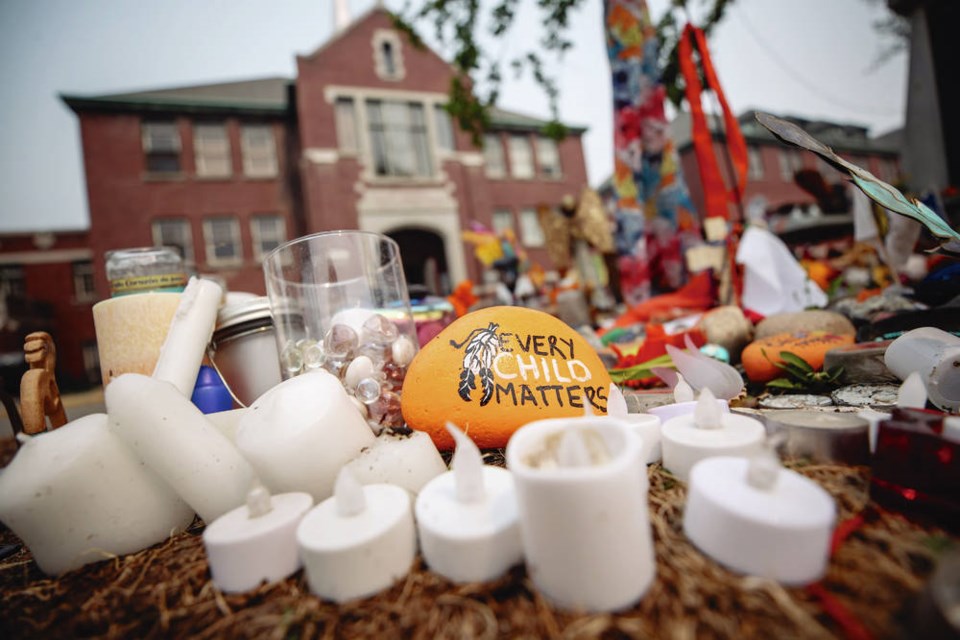I am an old white guy, long retired in Saanichton. I sit in a big chair much of the day, glancing at what’s going on in the world, courtesy of news sites on a smartphone. I have everything I need, including a best friend and two fans.
But of late there has been this increasingly ugly shadow.
Our smartphone offers me bad news items beyond count. I have learned how to move on quickly. But there is one story that lingers in my head, simply won’t go away: those unmarked graves discovered alongside abandoned residential schools.
Then the other evening in conversation about it with friends, something struck me. I believe I have come upon new evidence in this matter, hidden in plain sight. In two words: unmarked graves.
It’s reasonable to assume that unmarked graves are never intended to be found. Why this secret? Guilt? Shame? Fear? Something else?
From that thought, the darker side of my imagination soars. I envision these graves being dug, being filled, in the night, by shadow people, moving without a sound. There and then gone. Were these little bodies in a casket or covered in a blanket or a sheet? Or just earth?
Question: how much would it have cost someone to find a stone marker, perhaps scratch the first name or initials of a child on it and leave it at the head of a newly dug grave?
Now I am burning inside. These were Christian institutions, and practising Christians bury bodies in graveyards with memorial stones; there is ceremony and there is a fence to mark the sacred ground.
Conclusion: The deaths of these children was not considered worth noting, worth remembering, by those who were charged with caring for them. But our species, all species, are wired to care for their young, love them, cherish them. And for us, not just our own children, all children.
And so, as this story grows in horror inside my head, I am uncertain what to do. I must do something, but what? I have been pondering an answer for days and have reached some tentative conclusions.
First, I must mourn. For as long as I am led to. And I must include in my mourning the school survivors and their families and those parents who had their children taken from them.
Next, I must stay on top of this story, read widely and carefully. Follow and reflect on what unfolds. Opportunities for action may yet unfold for me.
In my mind’s eye, I see in future years tidy graveyards with those child bones reburied, stones with names, fences to mark the sacred. But wait. That’s the old white guy again, telling others what to do.
So above all, I must listen. Intentional listening.
The Indigenous people whose families who lived through what now smells to me like genocide, they will eventually voice what they want from people like me.
I am 89 years old. I hope I live long enough to hear them.



